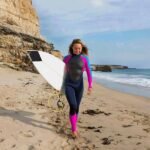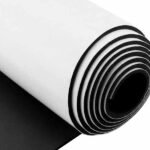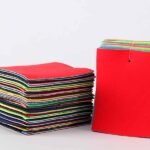When it comes to choosing waders, the material is a crucial factor that impacts comfort, durability, and performance. Neoprene and PVC are two of the most popular materials for waders, but which one is the better choice for your needs? This guide will help you understand the key differences and make an informed decision.
Neoprene waders and PVC waders differ significantly in terms of insulation, durability, and suitability for various environments. While neoprene offers better insulation and flexibility, PVC is lightweight and cost-effective, making it ideal for specific applications.
Let’s dive into the details to find out which material is best for your wader requirements.
What material is best for waders?
Choosing the right material for waders depends on the conditions in which you’ll use them. Each material has unique advantages tailored to specific environments and applications.
Neoprene is ideal for cold water and extended use, while PVC is better suited for warm water and lightweight activities. Both materials cater to different needs, so understanding their properties is essential.
Comparing Wader Materials
| Feature | Neoprene | PVC |
|---|---|---|
| Insulation | Excellent for cold water | Minimal, suitable for warm water |
| Durability | High, resistant to abrasions | Moderate, can tear easily |
| Flexibility | Soft and stretchable | Stiff and less flexible |
| Weight | Heavier than PVC | Lightweight and easy to carry |
| Cost | Higher | More affordable |
Neoprene is the preferred choice for anglers and professionals working in colder environments, while PVC suits occasional or budget-conscious users.
What Are the Main Differences Between Neoprene and PVC Waders?
The primary differences between neoprene and PVC waders revolve around their material properties, performance, and usage scenarios.
Neoprene waders excel in insulation and flexibility, whereas PVC waders are lighter and more affordable. Understanding these differences will help you choose the right wader for your needs.
Detailed Differences
- Material Composition: Neoprene is a synthetic rubber offering insulation and elasticity, while PVC is a plastic material known for its water resistance.
- Temperature Suitability: Neoprene retains body heat, making it ideal for cold water. PVC, however, is better for warm water activities.
- Durability and Strength: Neoprene withstands rugged conditions better than PVC, which is prone to tearing under pressure.
These distinctions highlight the suitability of each material for specific environments and applications.
Are PVC or neoprene waders better?
This question often depends on the user’s priorities, such as temperature, activity, and budget. Each material offers advantages that cater to different preferences.
Neoprene waders are better for cold and rough conditions, while PVC waders are a practical choice for lightweight, budget-friendly use. The decision should align with your specific needs and the environment you’ll be working in.
Factors to Consider
- Weather Conditions: If you’re fishing or working in cold weather, neoprene waders provide the warmth you need. For warmer climates, PVC waders are sufficient.
- Activity Level: For activities requiring mobility and comfort, neoprene offers better flexibility. PVC is better suited for casual or short-term use.
- Cost Efficiency: If you’re on a budget, PVC waders are a more affordable option without compromising water resistance.
Choosing between the two comes down to balancing functionality with your specific requirements.
Which Wader Material is Best for Cold Water Fishing?
Fishing in cold water requires insulation and comfort to ensure a safe and enjoyable experience. Not all materials are up to the task.
Neoprene waders are the best choice for cold water fishing due to their excellent insulation properties and ability to retain body heat. They keep you warm even in icy conditions, allowing you to focus on your activity.
Why Neoprene is Superior for Cold Water
- Thermal Insulation: The thick neoprene material traps heat effectively, maintaining a comfortable temperature.
- Water Resistance: It provides a secure barrier against water, ensuring you stay dry throughout the activity.
- Flexibility: Neoprene’s elasticity ensures ease of movement, even in challenging terrains.
In comparison, PVC waders lack the necessary insulation, making them less suitable for colder conditions.
Conclusion
Selecting between neoprene and PVC waders depends on your environment, activity, and budget. Neoprene waders stand out for their insulation and durability, making them ideal for cold water and rugged use. PVC waders, on the other hand, are lightweight and affordable, perfect for casual or warm water activities.
At Szoneier, we specialize in high-quality neoprene waders designed to meet the needs of professionals and outdoor enthusiasts. With years of manufacturing experience and a commitment to quality, we offer customized solutions to suit your specific requirements.











